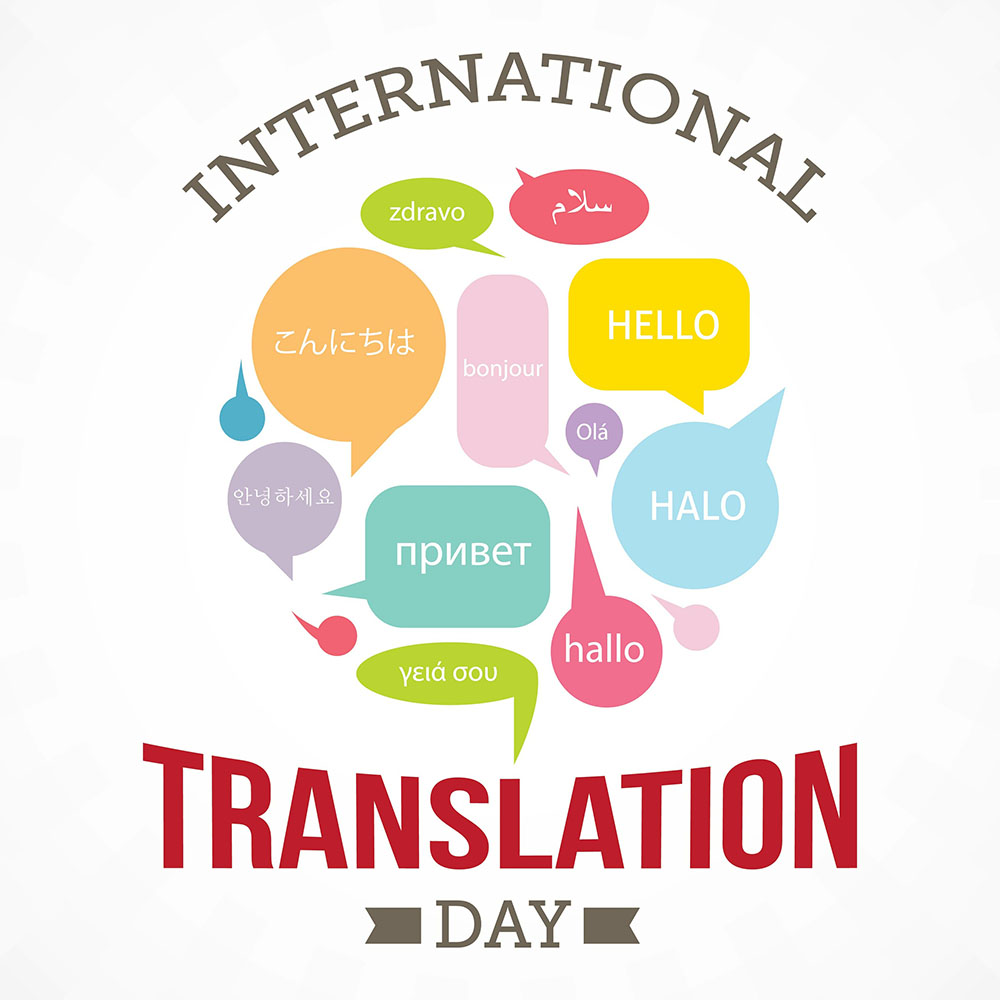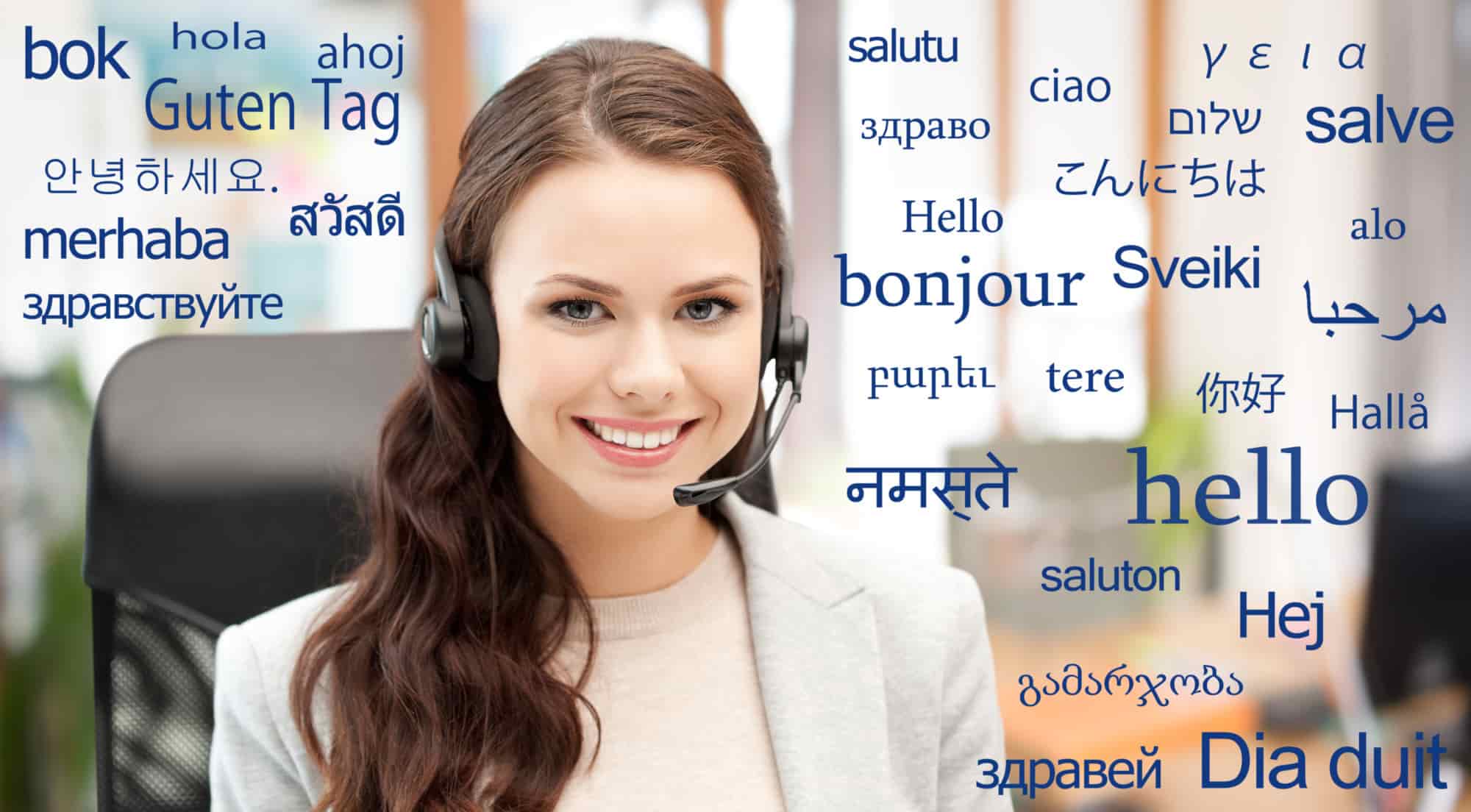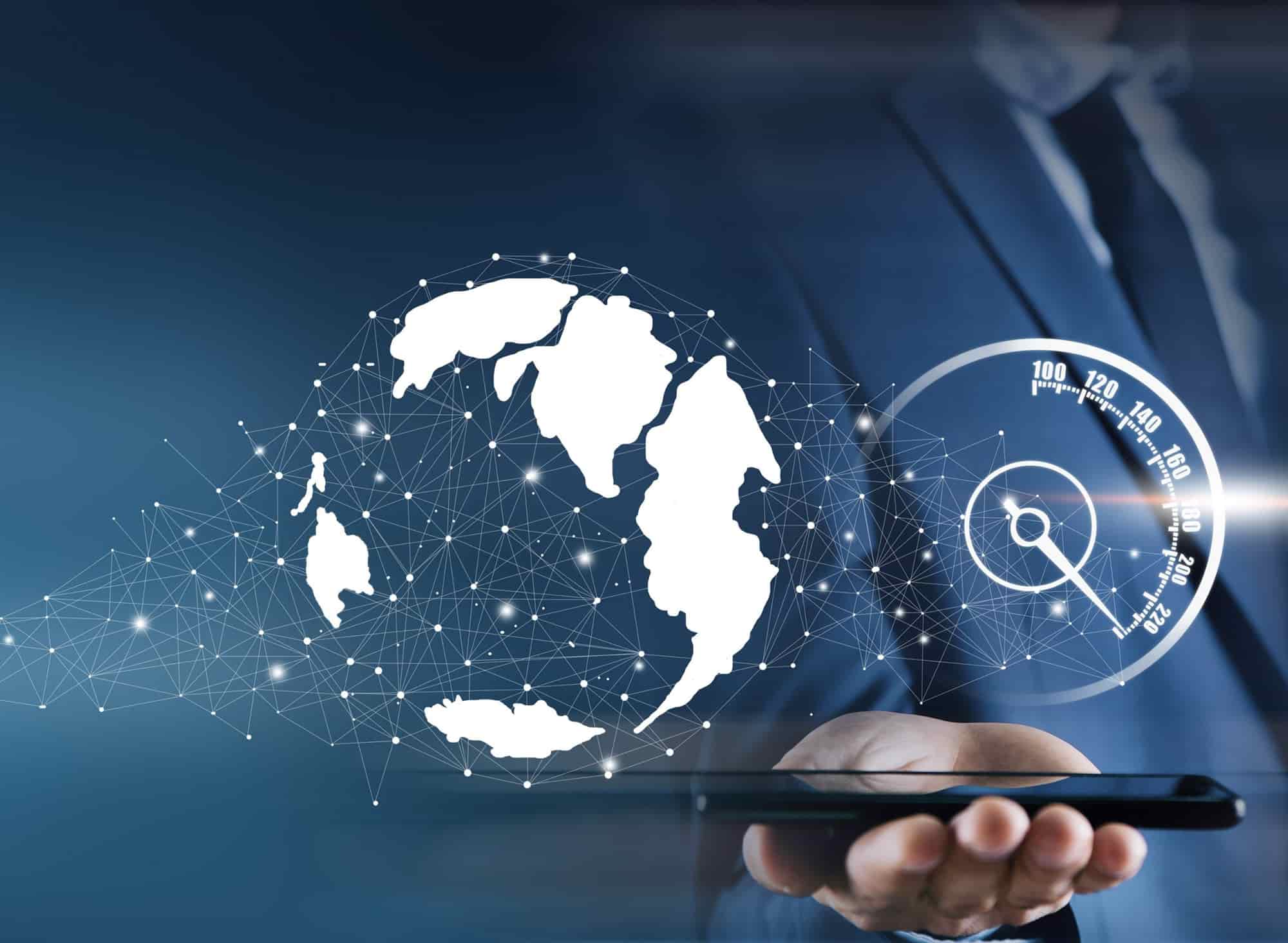
By: Hana
Date: February 27, 2021
What is video translation? The process of processing the content of a video for use in another language (the target language), that will, typically, include the following steps:
- Transcription of the original audio,
- Translation into the target language, and,
- Subtitling the video, adding a voice-over track, or dubbing
Videos have been a popular way to reach target audiences online since long before the pandemic. But lately, we have seen a marked uptick in the need for translating videos.
I guess it is one of the ways the pandemic has made companies pivot and work standard situations from non-standard angles.
Here are a few examples of use cases:
- A large, multinational corporation that used to train their international workforce by sending facilitators to conduct in-person training is now using an online Learning Management System with a curriculum consisting of written documents, videos, and interactive materials and quizzes.
- A museum that has been subject to restrictions of in-person visits is improving its online presence with a library of videos and interactive content in multiple languages.
- A local government organization is conducting online information meetings for the public on topics such as Covid-19 vaccinations. The events are recorded and later posted on a website for continued use.
It is no wonder that work with audiovisual media is in demand. And we love these projects! Each is different, each more interesting than the other. So, what goes into video translation projects and what can you do to get what you need and stay on-budget and on-time?
The Original
It goes without saying that the better the quality of the original recording the easier the project will progress. In case of professionally produced videos, hold on to the original script. Having a script handy will reduce the cost as no transcript would be needed. Ask your provider for a secure method of uploading the files (such as an SFTP site).
The Deliverable
When deciding on what the final product needs to look like, consider the target audience and intended use. Subtitles or voice-over are some of the most frequently used choices. Even if you believe you know exactly what you need, it helps to discuss your project with your Language Services Provider and check if they have different or additional suggestions.
Subtitles vs. Captions
By the way, do you know the difference between subtitles and captions?
When you hear “captions”, assume the video will be used for those hard of hearing. “Subtitles”, on the other hand, are used for those who speak other languages.
Voiceover vs. Dubbing
Voiceover and dubbing are both techniques used for bringing the video experience to a new, target language audience. Voiceover is a single-voice narrative style audio that lacks the tonality and emotion of the original audio. Even if there are multiple speakers, voiceover is typically done using one voice only.
Dubbing is a technique that matches voices to the speakers by gender, approximate age, etc. Tonality and emotion are also matched, to the maximum possible degree. Expertly produced dubbing also pays attention to synchronization of audio to lip movement, etc.
Due to the use of professional recording studios and voice talent, dubbing will be the most expensive option here.
Video Translation Pricing
Prices of producing a target version of a video will be influenced by a number of factors, including:
- Length of the video
- The complexity of the original recording – one speaker vs. multiple, for example
- Quality of the recording
- Desired deliverable
- Timeline
- Target language
As far as pricing units, our own is a composite price consisting of price per minute for transcription (if needed), price per word for translation and price per hour for project work such as creation of subtitles or recording of voiceover. Others will charge project fees that may not be broken down into individual categories.
In any case, when getting videos translated, be sure to understand the process and the techniques your supplier will use to get the job done. Since many videos businesses use will have a certain marketing or branding component to them, it is also important to select a supplier you can trust will produce high-quality work.
With videos, as with any other translated materials, you may only get one shot at best impression with your target audiences.
Have questions about video translation or any other translation project? Contact us for a free, no obligation consultation.

By: Hana
Date: November 3, 2020
So what does ISO 27001, a data security standard, have to do with translation quality?
Translation quality has many faces. It can look like correct terminology and syntax.
Or how about the appropriate style for the given audience? And, let’s not forget all-around excellent customer service!
And it can also look like the secure handling of information assets.
For some time now, our clients have been telling us about the importance of data security for them and their stakeholders.
Continuous improvement has been the way of life for us here at Teneo ever since we achieved our first ISO certification (9001) back in 2013. This year, amidst numerous “work from home” scenarios, data security became even more important to us and our clients.
That is why, faithful to our improvement culture, reached for another ISO certification.
What is ISO 27001?
ISO/IEC 27001:2013 is the international standard for information management systems. Similar to other ISO standards, it represents an extensive framework for “establishing, implementing, maintaining, and continually improving an information security management system”.
In essence, by applying the ISO 27001, we make sure we handle information securely, that we pay attention to existing and potential risks through periodic risk assessments, and take action to mitigate them.
For us at Teneo, this achievement translates into a commitment to the security of our client’s data and systems.
What Information Security Controls are covered?
Examples of the areas covered by ISO 27001:
- Access Control
- Antivirus and backup
- Communication security
- Classification of information
- Handling of media
- Physical security
- Human Resource security (including work from home and mobile devices)
To become certified, Teneo has improved and expanded upon the existing documentation and processes in the area of information security. In addition, the Teneo Team also had to prove that the processes and guidelines are actually used in the course of managing and processing our work. Finally, Teneo received its certification from ISO Quality Services, Ltd. on November 2nd, 2020.
Moving forward, we will undergo an internal audit as well as an external audit each year.
Benefits for Teneo’s Clients
Our clients already know we provide high-quality translation services. And now they can also have the peace of mind of knowing that we have processes, systems, and technology in place to provide for the highest possible level of data security out there. Data security is even more important now when people might be either working remotely or in a hybrid scenario.
There are only a few Language Services Providers who have achieved this certification and who operate according to the best standards available today. We are proud that our team is among those who have made the conscious decision to invest in data security. We show our clients that we are a worthy partner supporting their own data security efforts.
What is Next?
As we celebrate this major milestone, we are already working toward the next goal of our incremental improvement. For us, this is the NIST CSF (Cyber Security Framework) assessment. Because we are always taking our efforts to the next level, we are working on deepening both our processes and systems to comply with the more technical controls of the NIST assessment.
Stay tuned for our progress!

By: Hana
Date: September 27, 2020
We have International Translation Day. But sometimes it can feel like translators, interpreters, and others in the language services industry are invisible. Seriously, how many times do you tell someone what you do, and you see a look of genuine recognition in their eyes? How many times have you flinched when someone used the word “translator” in a sentence like: “Can you put a translator on the phone for me?”.
Yet, without language professionals, the world would have serious issues. Think about this: two years ago, Forbes magazine published some amazing stats (now most definitely obsolete) about how much data we create, search, and use every day and how these numbers are growing, exponentially.
As people who work with languages, we understand that a considerable part of this data needs to take to journey from one language to another. Sure, we’ve got some help from machine translation and AI these days but let’s face it, without us translating, interpreting, editing, post-editing, proofreading, adapting, localizing, project-managing, and performing any number of other activities, things just would not be happening. Without us, worldwide communication would slow down to a glacial pace or, in many cases than we dare to admit, it would come to a grinding halt.
…Yet Our Work is Everywhere
People seldom think about it, but translation is everywhere and touches every single area of human activity. When I tell that to people I meet, they are sometimes puzzled, as if they have never thought about it. And maybe they haven’t. But you and I know.
We read a book and can tell it was translated. We recognize the translator’s mind behind subtitles on an Indie movie. We appreciate the difficulty of translating jokes or menus. We understand that without translators and interpreters, we would not be hearing about news and happenings from much farther than our own backyard. We know someone labored on translating the user manual for the new vacuum. We make shake our heads over the questionable results, sometimes, but the next moment we are in awe of someone’s mastery. Like when watching interpreters in high-level diplomatic meetings. How would things go without them?
And what about our work in the pandemic? Language professionals have stepped up their game yet again. Translators have been meeting impossible deadlines and working in challenging situations. Despite the dire situation, interpreters are much needed in medical facilities and courts. Despite the danger and implications the new world has on how our work is done, we show up every day, thinking “if I don’t, who will?”.
A Day to Celebrate Language Professionals
September 30th is International Translation Day. Declared so by the UN as the day to celebrate all language professionals. This is the day of the feast of St. Jerome, the Bible translator and patron saint of all translators. This year, FIT has dedicated the International Translation Day to “finding the words for a world in crisis”, understanding the important role translation and interpretation play at a time of crisis. And unless you have lived under a rock for the last many months, you sure know that we are not just finding the right words, we (as mankind) are also creating many new ones!
Our Tribute to You
Today, we at TLC want to pay tribute to all the language professionals. We are so very proud of sharing the passion for language with you. We marvel at your skills, your experience, and your professionalism every day. We pay tribute to your willingness to dedicate your lives to the study of language, new technologies, and continuous improvement. We appreciate you for taking on the responsibility of getting each message across languages and cultures, correctly. We take our hats off to you for the detailed, tedious work you do, and the phenomenal results you accomplish, one word at a time. And we thank you for the courage to take on new challenges during these difficult times.
Let’s Be Seen
We also want to do our part in helping others recognize and appreciate our profession. And you can help! Let’s all share on social media today and in the coming days and weeks why we do what we do. A sentence, a paragraph, or a simple share of someone else’s post. #internationaltranslationday #mywhy
Today is about us. Let’s let the world know why we celebrate!

By: Hana
Date: September 6, 2020
Growing translation services business = growing real estate?
It felt weird, at first, and I think I finally figured out why. When I started our translation services business in 2007, we had a tiny office space. As the years went by, we moved several times. And each time, we went bigger. We needed more space to accommodate the growing team.
The growing real estate around me felt like a sign of success. When a new, more expensive lease was in front of me, I felt a little worried about the jump in expenses. My husband always said, “you will grow into it, you always do”. And we did, just like last year, when a neighboring suite became available and we grabbed it and had it connected to ours. The office felt luxuriously spacious. And we made it look just the way we wanted – with bright orange tones, stand up desks, multiple gathering spaces, including a “chill” room with a couch, yoga mats, and bean bags.
But now we have been in the middle of a pandemic for over 170 days. Like most, we have spent limited time using our beautiful office. And when we did, we each spent the day holed up in our own, respective offices. The space lost its main purpose – the daily team building and camaraderie, sharing of a meal, or just stopping by someone’s desk to ask how their weekend was.
This much is clear: it is my team who makes the business of language services work. And they make our space work, too. Without them, the large office is not a sign of success but an empty and cold container in which we are doing what we could just as easily do from home, perhaps with less anxiety.
On our road to a virtual translation services office, we learned a few things:
First:
We are good at working virtually. But it did not come without obstacles. Shortly after the initial lockdown started, I fired three people. I have never fired three people before, all at once. There were some problems before the pandemic but once we started working from home, a sleuth of issues emerged, almost immediately. But since these disruptors have been gone, it has been smooth sailing for the rest of us.
Second:
We replaced the dismissed employees with new ones. And we went virtual here, too. Instead of focusing on local talent, which has always been limited in our industry, we opened our eyes to a nationwide search and found people whose creativity, experience, and willingness to give the job their best shine every day.
Third:
As we work with large corporations, we have been hearing an increasing number of voices telling us they are not going back to their brick & mortar office at least until the end of the year. Or even later. One of our clients will not go back, ever. The lesson here is that if a much larger organization can embrace virtual, manage the change, and thrive, so can we.
Fourth:
When we added up all expenses related to our physical office, aside from rent, we got to a shockingly large number. Wouldn’t it make more sense to be saving most of that money and create a “rainy day fund” or “future headquarters fund”, instead?
Fifth:
Realizing there are teams who have always excelled at working and cooperating remotely, like software engineers, we have charted a new course for learning the methods they have been using for a long time. We are on the path to implementing Lean Methodology (Kanban, specifically, for workflow management) and incremental changes that will result in big differences in our work.
The next 6-12 months
Our lease was up at the end of last month and as you may have guessed, we have not renewed. We packed up and moved most of our things into storage. We are getting an office at a beautiful space with access to a large number of conference rooms and many amenities.
When someone wants to work outside of their house for a day, they will have a wonderful place to do so. We will have a physical address and a place to meet with our translation services clients if need be. At the same time, our office-related cost will go down by roughly 75%.
And that is the plan, for the next 6-12 months or so. We look forward to seeing you in all the usual places – online, on the phone, or in our email inbox. Or, bump into us (by appointment only) at our new address:
5049 Edwards Ranch Rd. Floor 4, Fort Worth, TX 76109

By: Hana
Date: August 14, 2020
August is Women in Translation Month. Here is my story.
As for “Why Languages?”, my answer has always been “because I am not good at math”. As for “Why Translation Services”, well, that is a bit more complicated.
I grew up in what is the Czech Republic today. The population of the entire country is about 10 million. A postage-stamp size of a country if you ask me. It also means that if you want to communicate internationally, you need to learn other languages.
Learning Languages
The school system started me off with Russian, just like everyone else at the time. I liked it. Russian and Czech are both Slavic languages and even though they use different alphabets (Latin for Czech vs. Cyrillic for Russian), the grammar and even some words are close.
Fate decided my next language for me. One day, when I was in about 4th grade, a red balloon caught in our fence. My parents went to get it. It had a note attached that informed us that children in Germany released these Red Cross balloons and the child whose balloon would travel the farthest would win a bicycle.
We mailed the note from the balloon back and crossed our fingers. Our balloon belonged to a girl named Ute and as it turned out, she won the contest! And that was the beginning of a friendship between our two families which prompted my studying German so we could, in fact, communicate.
I did not add English until high school but immediately loved it the most of all the languages. In retrospect, I think it was because even early on my teacher had us work on translating short pieces of literature and learn by comparing our translation with that of a professional translator (who actually translated the subject of the exercise).
I remember being amazed at the creativity involved.
Choosing Translation
Halfway through high school, I was still stuck between wanting to become an archeologist or working in international trade. Both potentially involved travel which, for a girl from a socialist country, already looked like a dream.
At the beginning of our senior year, our counselor had us research schools and majors more in-depth. I listed translation, among others, as it still involved in languages and travel.
The counselor told me “you will never make it” which piqued my interest. “Why?” I asked.
“Because there is a rigorous entrance exam and they only take about every tenth person who takes it. No one from our school ever made it in.”
Now I was really hooked. I went and read everything I could about the program. I made an appointment with a couple of university professors and asked them what to read before the exams.
It wasn’t enough to study for the entrance exams, though. I needed to ace the final high school tests as well.
I do not think I did all that well. In the end, it was all just a blur. But I got in. And loved every minute of both my undergraduate and graduate programs.
From Translator to an LSP Owner
And I have loved every day of working in this business and providing translation services.
What is it they say? If you love what you do you have never worked a day in your life. That’s me, right there. I have never worked a day in another field.
I started as a freelance translator and interpreter, but shortly after graduating, my best friend and I started our own business in Prague. After moving to Texas a few years later, I started my current business, Teneo Linguistics Company.
I am so very grateful for being able to work in translation. It is a people-oriented, personal business. There is nothing more personal than feeling the joy of helping someone hear and understand and be heard and understood. And this is the answer to “Why Translation Services?”.
Translators are facilitators of communication and they are educated, talented, beautiful people who care about what they do. We are privileged to be working with hundreds of them, all around the world.
Our industry is rapidly evolving. Mankind is generating more data needing translation than ever before. And it is exciting to see how we can pick up the translation slack with the help of technology that gets better every day.
We use technology in everything we do: standard translation, localization, machine translation, and post-editing. It also allows us to use the tools of the trade to expand into other areas of service, like Translation 360, so that our clients could get greater peace of mind around translation services.
As for me, I have not done any translating in years. My current hat is that of an owner of a Language Services Provider firm, a partner to our clients, and a boss to a number of awesome employees. Removing obstacles from their way so they could grow and shine is what I do.
But I do it all in the context of the best industry ever – the language services industry – and I would not trade it for the world.

By: Hana
Date: August 5, 2020
As the pandemic continues, are you able to make international meetings and calls? Or is everything canceled due to the lack of an on-site interpreter?
COVID-19 has forced private and public companies to work in a different way.
Meetings were once held at an office with an interpreter. But now social distancing makes that impossible.
So companies turn to the Internet to communicate. But without an interpreter foreign dialogue can’t happen.
What’s required is a remote interpreting service. Where a skilled VRI interpreter acts as an interpreter to help conduct the meeting.
This article looks at Virtual Remote Interpreting: what it means, how it works, and how it can help you.
So if you want to make essential international calls and meetings happen in 2020, read on.
What Is VRI Interpreting?
Virtual Remote Interpreting or VRI is a video call session conducted by an accredited linguist.
VRI lets you speak via video call to anyone in the world on a secure conference call. The interpreter doesn’t need to be present. And meetings can be scheduled at short notice.
All that’s required is video conferencing hardware and an Internet connection. Then you connect to a VRI interpreting service, like TLC.
It’s important to note that VRI is conducted by a trained professional interpreter. No app can compensate for an educated linguist who understands cultural sensitivity.
Types of Remote Interpreting
There are two types of video remote interpreting to help host your meetings. Let’s examine them.
Consecutive Interpreting
During your video or telephone call, the interpreter waits until you finish speaking. They then relate what’s been said to the other party.
This is the main form of interpretation for business meetings, press conferences, etc.
Simultaneous Interpreting
For conferences and large meetings, the simultaneous mode offers interpreting in real-time. As the speaker talks, the interpreter interprets.
This method requires specialized equipment and a longer lead-in time.
TLC offers a comprehensive package for multi-nationals that includes both these services. Moreover, Translation 360® combines translation, consulting, and interpreting into one solution.
Delivering VRI Interpreting in 2020
Due to lockdown and social distancing, traditional meetings are mostly on-hold.
Interpreters who visit your premises can’t come. So that leaves you with telephone calls and video conferencing.
Telephone meetings don’t require prior scheduling. All you need is a standard landline or mobile phone.
Video conferencing can also host telephone calls with no picture if you wish. But nothing beats face-to-face and TLC interpreters can meet this requirement at short notice.
Our Interpreting Management Platform lets clients schedule sessions or request immediate, on-demand work.
The service is low-cost yet the Cloud platform guarantees high-quality calls. It’s used from medical professionals to small businesses and large corporations. And everything remains confidential and secure.
Professional Video Remote Interpreting Services
International meetings can continue to happen through COVID-19 through remote interpreting. And Teneo Linguistics Co. is here to help.
Our service is hosted in the Cloud to ensure high-quality meetings. With 99% uptime and secure access, it’s perfect for important confidential calls.
Our video interpreters excel in cultural sensitivity, too. That means no awkward silences or mistranslated phrases.
Request a quote today to discuss your remote interpreting needs. We also offer translation and localization services so contact us to learn more.

By: Hana
Date: July 30, 2020
The cost of translation has always been a mystery to clients. They often wonder why we cannot quote them over the phone. But for us, seeing the document and understanding the purpose of the translation is necessary. Only then we can provide a fair estimate and delivery time.
Here at Teneo, we pride ourselves on creating specific processes for each customer. In our case, the initial discussion about pricing, subject matter, language pairs, and desired turnaround times, is of utmost importance.
Pricing Translation Services By the Unit
Historically, the model you will encounter most often is pricing by the unit. Here in the U.S., we use a per-word rate. In Europe, you might encounter pricing per standard page or line of text. A standard page has a specific number of words on it.
No matter which unit we use, translation price differs by language pairs. A source word in Spanish costs less than a source word in Zulu. The rarer a language is, the more expensive it will be. The reason simply is that in languages with fewer speakers, there are also fewer educated, experienced translators.
The price per unit of the translation will include the exact workflow of your project. For example, if your document is for information only, the rate might include only translation and no review. If it is a shiny, well-designed marketing document, the rate will include translation, review, and quality assurance steps.
The subject matter of your translation project is important as well. Highly technical documentation may require that specialized linguists undertake the translation, resulting in increased cost.
In addition, there can be additional surcharges such as rush fees, project management fees, or charges for translating text in illustrations. Desktop publishing services to modify the layout of documents to accommodate text expansion, for example, also often come into play.
Your Language Services Provider might be using a CAT (Computer Assisted Translation) tool or a Machine Translation engine. In that case, your quote may also include appropriate discounts for repetitive content.
Such tools leverage already translated content and result in financial savings, faster turnaround times, and greater consistency of terminology.
Pricing Per Translation Project
There are many examples of why the traditional, per unit model just does not work. You will know when it happens – it just feels like forcing a square peg into a round hole. Let’s say you have a steady flow of documents that need to be translated and certified, daily.
In this case, pricing per certified document might be a better fit. The original documents would need to meet certain criteria. For example, they might be of the same type, approximately the same volume/length, and for the same purpose.
Once all the unknowns are out of the way, your translation vendor will want to set up processes. At this point, it is a good idea to include automated workflows. Per-unit quoting for each request would likely be a waste of time. Not to mention that it would not be the best deal for you or the Language Services Provider.
Or, your documents require additional or unusual handling, such as delivery within a specific software program or online tool. Here again, quoting per unit may not do the trick. It will take extra time and perhaps additional expertise to satisfy the requirements of the project. And that is something a simple per word rate would not cover.
Another scenario may be Linguistic Validation. Linguistic validation is a complex process of translating clinical research documentation. It includes steps such as validation of the translation by in-country subject matter experts.
An additional quality check called back-translation is also a favorite, especially in Life Sciences. This means that the translation is translated back into the language of the original. The last step is a reconciliation of both the translated and back-translated versions then follows.
Confused about how translation pricing might work for you? Connect with us here and get a free estimate & consultation today.

By: Hana
Date: July 20, 2020
Yes, we all know how important quality is.
And yet, fast translation, and how to translate faster, are also always on our mind. Why? To keep up with our customers, and their fast-moving business world. We know how much planning goes into a product launch, sharing a copy of a legal document with a partner abroad, or simply communicating with an employee who does not speak English. But, sometimes, circumstances make us move faster than predicted.
How fast can a document be translated?
The short answer is, “it depends”. It depends on a number of factors. Chief among them are the volume for processing, the language combination, and the complexity of the original document. Generally speaking, a 200-word document about handwashing to be translated into Spanish will take a short time to translate. A 6,000-word clinical research document we need to translate into Norwegian will take much longer.
As you can imagine, a human translator can only type so fast. If you enter the actual process of converting text from one language to another, including research and quality checks, you will conclude that it actually is a pretty time-consuming activity.
But wait, before you give up on professional services and paste your text into Google Translate (read why that is a really bad idea HERE), read along a bit more. Here are 3 tips for you to get an outstanding and fast service without compromising quality:
Tip #1: Leverage Previous Work for Faster Translation
Do you have previously translated content that is on a similar topic or contains terminology that is closely related to your current document? If so, provide this to your Language Services Provider.
Ideally, they will be able to leverage your previously completed project to pull out relevant terminology, or even “load” the older original and corresponding target language version into their CAT (Computer Assisted Translation) system.
This process, called “alignment”, results in an increased chance of re-using previously completed work. In other words, not all phrases in your current document may need translation. The end result is a faster processing time.
Tip #2: More Minds = Greater Capacity = Faster Results
Unless your document resembles Shakespeare or a document of great stylistic value, consider asking your vendor to use multiple translators. It is easy to split a document into even, logical parts, and instead of one translator and one reviewer, utilize the minds of several translators. Together, they will complete the work much faster.
And how can you make sure that the final product reads as cohesive as possible? For best results, all translators need to work in one online CAT tool so that they can benefit from the results of each other’s work in real-time. Second, one Linguistic Reviewer is better than two or more. That way, he or she can unify the style of several translators during the review process.
Tip #3: Technology for the Fastest Result
Machine translation with (human) post-editing is, hands-down, the fastest way to process translation. However, let’s discuss what is we mean by Machine Translation here. Machine Translation, for our purposes, means translation processing using a paid, and, preferably trained, machine translation engine. This excludes the use of any free, online translation resources such as Google Translate.
Machine translation is inexpensive and happens practically instantaneously. And, it might be the only step in your workflow, but only if you simply need to know “what the document says”. In other words, for an internal-only, information-only translation, machine translation may be good enough.
But if your document will see the light of day outside your own computer, it will need humans to finish and polish it. This process is called Machine Translation Post-Editing. If the machine translation output is fairly good, a translator will need only a fraction of the time for post-editing that would be needed for translation from scratch.
Having a Fast Translation Plan is Ideal
The ideal way to go about high-quality, professional translation, is to plan for it. We translate enormous volumes of data for clients every day. But the key is that we have been able to plan for the daily workload, and have a trained team in place, along with the latest technology, to hit the tight deadlines day after day.
If you happen to face an unplanned scenario and you are the one asking “how fast can a document be translated”, one of the tips above might help. Remember, it is always best to have a translation service partner who has processes and relevant technology to increase processing speeds, quickly and efficiently.
Would you like to know more about the pros and cons of the different approaches to translation? Contact us here

By: Hana
Date: July 10, 2020
Mankind is producing more data than ever before. To paint a picture of what is happening here, in 2017 we produced about the same amount of data as in the past 5,000 years. And the size of data we are generating will continue to multiply.
This comparison is astonishing. Especially the fact that from my business’s perspective, we are also talking about the ever-increasing amount of data that needs translation. In fast-developing, global industries it is important to be able to make decisions on the fly and yet with as much information as possible. The main verticals include health care, automotive, biotech, and cybersecurity. The winners are those who have information available as soon as possible and in the right language.
Enter Machine Translation
That is why machine translation, is making such great advances in our industry. If it is deployed and used well, machine translation can save a lot of time and cost to any organization. And it will continue to do so in the future. Neural machine translation, the type of translation we use now, continues to learn, and provides greater benefits. These include shortened cycle-times, lower cost, and greater accuracy over time.
Customers usually have a good understanding of the fact that professional machine translation does not utilize free translation engines such as Google Translate. Instead, it relies on paid and trained machine translation engines. There are elements of artificial intelligence that even help select the right machine translation engine for the domain of the document after “reading” the content.
At first, customers ask questions like “How good is machine translation these days” or “How does machine translation work”. But the very next question that comes to mind is whether the data machine translation processes are safe.
And it is a question we should be asking. With the volume of mission-critical data being at an all-time high, the way an organization operates, including the way it processes translation, presents a challenge.
The Cost of a Data Security Breach
There are several studies out there that show the financial impact of data security breaches for organizations. According to an IBM Cost of a Data Breach Study, for example, the average cost of a data breach in the U.S. is $3.9 million. More than 60% of respondents say they expect at least one attack within the next year. The most affected industry is health care.
This data shows that any global enterprise needs to have a machine translation solution designed specifically for corporations. Moreover, such a solution needs to put security front and center.
Such solutions also need to be available on-demand and must be easily accessible. The largest risk still lies in employees defaulting to using Google Translate and other free solutions because they are the easiest ones to get to when there is an immediate need.
Any such use of a public portal carries significant risks. The “fine print” in the user agreements of such tools always includes language that specifies the provider is entitled to a number of benefits. These include storing, modifying, reproducing, distributing, and creating derivative works using the content you put in. You see, the content helps the machine improve through its learning algorithms. But it is also very vulnerable to hackers.
Security of Machine Translation
So, what security criteria should we consider when thinking about a machine translation solution for a corporation? Here are just a few examples:
- Security, including encryption of the data
- Deployment solutions that work for you – in-house, cloud, etc.
- Rest API for connectivity of any proprietary systems
- The ability to adapt each MT solution to you as a specific client
- Integration with the primary infrastructure you use
- High-quality, human services such as terminology-building or post-editing integrated within the system
- Automated workflows that aid in minimizing “out of the system” communication and data transfer
Machine translation solutions that cover all these points do, of course, exist. And they will only continue to develop and grow as the digital environment in which we live and work is unlikely to change much in terms of the challenges it represents.
As far as translation, we just need to shift our mindset a little and consider security right along with the other top expectations we typically have, such as speed, accuracy, and cost.
Would you like to know more about this subject or available solutions? We would love to speak with you!

By: Hana
Date: August 7, 2018
In this day and age, the workforce is more diverse than ever. Companies of all sizes and specialties are quickly tapping into the diverse talents, resources, and subsequent languages of the world economy, finding themselves increasingly motivated to bridge cultural and linguistic gaps in order to recruit, keep, and develop their most valuable talent.
For multinational companies, one of the biggest challenges is to maintain brand and cultural unity across geographic borders. The same is true for domestic companies with a diverse workforce. Maintaining clear lines of communication is vitally important to performance, quality, safety, and the cultivation of an inclusive culture. And, for any company with a significant number of employees who primarily speak a language other than English, translation is incredibly important for clear communication to occur.
Below are 5 major areas of Human Resources where translation can be of crucial importance:
1. Recruitment
Multilingual and international staffing and recruitment necessitates the use of translated or bilingual ads, forms, applications, employment contracts and any related website content. A foreign language speaker with the skills and talents a potential employer needs will be more attracted to an open position if all details are presented in their mother tongue.
2. Training Materials
Translating training guides, codes of conduct, handbooks, manuals, and any e-learning courses – as well as adding subtitles to training videos or localizing video content – will help avoid any ambiguity or “room for error” in employee on-boarding & training.
3. Employment
Offering review forms and communication, benefit plans and guides, insurance documents, and related website content (such as employee portals) in the languages employees speak will result in giving them control over finding and researching the information they need rather than needing one-on-one support from HR employees.
4. Policies & Procedures
Documents like human resource policies and safety procedures are usually documents carefully crafted to comply with company policies and state and federal regulations. Where compliance is at play, translation is requisite for the elimination of legal risks.
5. Ongoing Communication
Offering translation of newsletters, blogs, FAQs for employees, corporate notices, memos and announcements will help maintain clear direct communication. Above all, offering communication in multiple languages will foster the idea of a culture that is inclusive and supportive.
Translation of HR documents requires high quality work, a blend of precise legal and HR terminology, and the need for exact, unambiguous, and culturally accurate verbiage. There simply is no room for error.
CAT Tools
The good news is that HR documents are, overall, a fantastic candidate for the use of Computer Assisted Translation tools. CAT tools aid in maintaining terminological consistency and accuracy and save companies a high percentage of translation dollars over time – updates to existing documents are quick and easy to implement, with charges only reflecting new or modified material. Thanks to the increasing globalization of businesses, translation for HR has developed into its own translation specialty – and the need is here to stay.
For companies with either domestic and overseas employees or foreign language speakers in-house – utilizing professional, CAT assisted translation for HR documents offers many benefits. Easily accessible quality communication, improved recruiting and retention strategies, decreased cost, and the elimination of legal risks are all reasons to begin bridging the gaps through HR translation.











